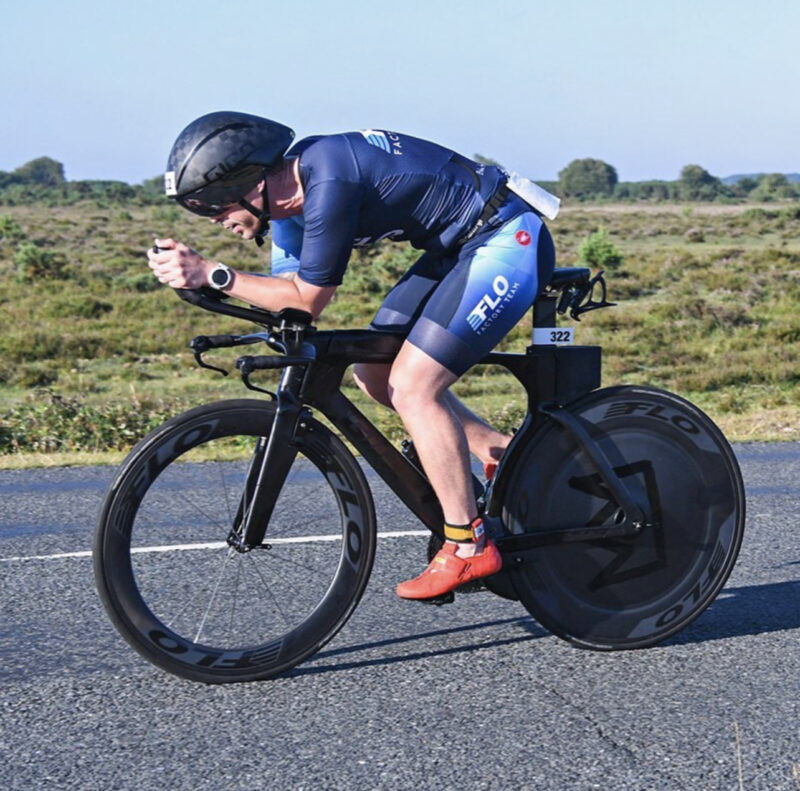This is part two of the series Secret To Fast Cycling: How To Be An Efficient Cyclist. In part 1, we discussed cycling efficiency and mechanical systems. Today, we apply these concepts to aerodynamics.
Aerodynamics is important for you as a cyclist because regardless of how fast you are on the bike, understanding how to be more “aero” will save you minutes on your next century, triathlon, or gravel race.
There are many aero myths and you’ve probably heard a number of things about aerodynamics over the years but I’d like you to read this blog with an open mind. Let’s set the record straight and understand why aerodynamics is one of the best ways to make you a faster cyclist.

Aerodynamics and Mechanical Efficiency
Remember from part 1, your goal is to be a faster cyclist, outsmart your competitors, and improve your mechanical efficiency. Aerodynamics burn watts in both heat and sound making it one of the largest watt wasters. Improving your aerodynamics by using more of the watts you put into the pedals to move you forward, the faster you will be.
Aerodynamics 101
Over the last 10 years, I’ve written volumes about aerodynamics on this blog. Most of it discusses equations, calculations, and a number of other more complicated topics to prove why aerodynamics matters. If you’ve followed along for years, you may feel this post is simplifying the topic. Well, you’re right. My goal is to break down the key components that effect mechanical efficiency and discuss how to improve them. Let’s discuss aerodynamics in simple terms.
The simplest visual for aerodynamics is a hand placed outside the window of a car. When your palm faces down, your hand moves through the air easily – low drag. When you turn your palm forward your arm quickly gets pushed to the back of the window – high drag. As you ride your bike you want to be more like a hand facing down. Reducing drag saves watts and makes you faster.
The Largest Aerodynamic Drag Producers for Cyclists and Triathletes
The top three items to optimize to reduce your aerodynamic drag:
- Bike fit
- Wheels
- Helmet
Wheels and Aerodynamics
At FLO we make wheels. Great wheels can save you minutes over long distance races. All FLO wheels are designed to greatly reduce your drag. A key factor to getting wheels that make you faster is to pick the right wheels for you and your cycling. If you need help with this, check out our Wheel 1 on 1 mentioned below.
Aerodynamic Myths
Let’s address a few of the common myths about aerodynamics.
- Aerodynamics only matter for faster cyclists. FALSE. Aerodynamics matter for every cyclist and the slower you go the more time you save.
- Weight is more important than aerodynamics. FALSE. Aerodynamics has been proven to be more important than weight by a factor of 60 for cyclists.
- I won’t be able to handle a deeper wheel in the wind. FALSE. Great wheel design and proper wheel selection means you can enjoy a deeper aerodynamic wheel.
- The fastest wheels are the best wheels for me. FALSE. Since your body is the largest drag component, you want a wheel that allows you to stay in and aero position. The fastest wheels for you are often not the deepest.
- Aerodynamics doesn’t apply to gravel because (insert random reason). FALSE. Aerodynamics applies to all humans on earth. Just because you aren’t riding a tri bike you haven’t magically avoided the laws of physics. We’ve proven that when aerodynamics are optimized, the savings are the same for a triathlete and a gravel cyclist. 11 watts!
Wheel 1 on 1
We’ve only scratched the surface of aerodynamics but these basics will give you more knowledge than 95% of your competitors. If you’d like to discuss aerodynamics in detail and learn how to optimize your wheels for your next century, triathlon, or gravel race, feel free to book a Wheel 1:1.

Co-founder at FLO Cycling. Jon manages the day to day operations and acts as the lead engineer for all FLO products.
